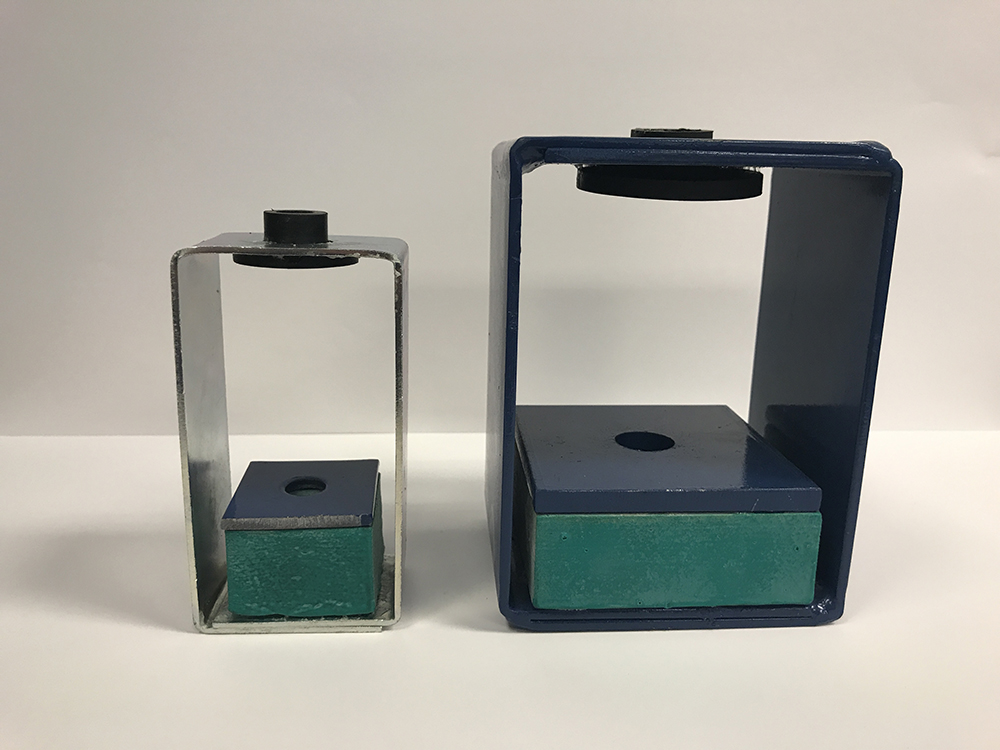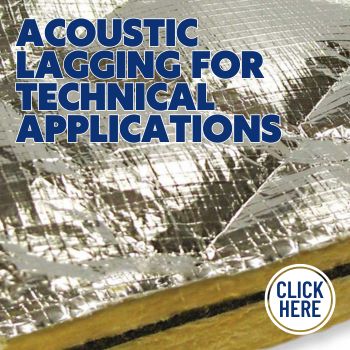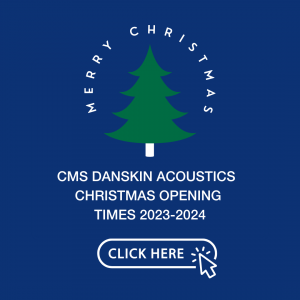Model FH Hangers incorporate a coded, molded, inorganic fiberglass isolation pad attached to a steel load transfer plate and to a stamped or welded hanger bracket. Hangers will allow a support rod misalignment through a 30° arc. Isolation brackets will carry 500% overload without failure. Fiberglass pads are fine (0.00027″ diameter/6.8 microns) bonded annealed glass fibers which are stabilized by severely overloading the material during the manufacturing process, and then coated with a flexible moisture-impervious elastomeric membrane. Fiberglass is unique in that the natural frequency is constant over a wide operating load range, and the stiffness increases proportionately with load applied.
Unlike neoprene-based pad hangers, fiberglass pads are suitable for use in high temperature applications, making them a better isolation material for use in mechanical rooms. Model FH Hangers are available in sizes with capacities from 40 to 1600 lbs. (18 to 726 kg), with deflection of 0.14″ to 0.34″ (4 to 9 mm).
Kinetics FH hangers are shipped fully assembled and ready for installation in threaded rod suspension systems.



